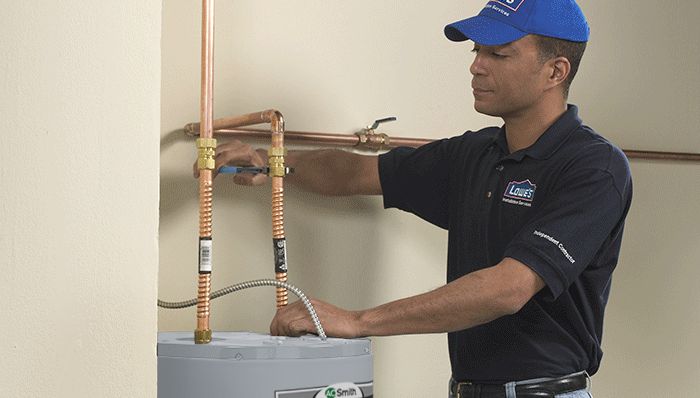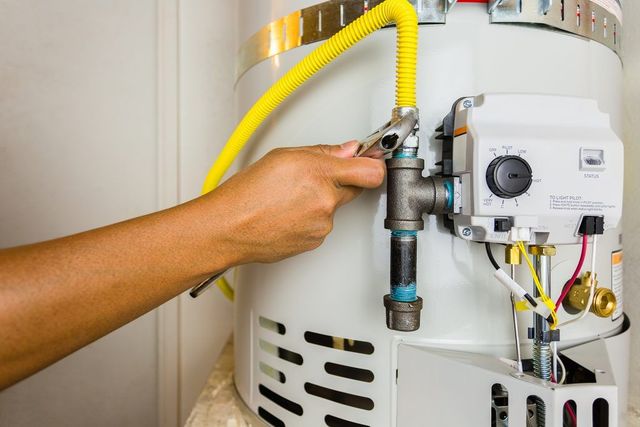Steps to Successfully Maintain Your Home's Hot Water SystemCaring for Your Home's Hot Water System: Key TipsStep-by-Step Guide to Caring for Your Home's Hot Water System
Additional ResourcesWhat are your thoughts on How to Maintain a Hot Water Heater in a Few Simple Steps?

Hot water is necessary for day-to-day comfort, whether it's for a rejuvenating shower or cleaning recipes. To ensure your warm water system runs successfully and lasts much longer, regular maintenance is crucial. This write-up provides practical pointers and understandings on how to maintain your home's hot water system to prevent interruptions and pricey fixings.
Introduction
Preserving your home's hot water system may appear overwhelming, but with a few basic actions, you can guarantee it runs efficiently for several years ahead. This overview covers every little thing from understanding your warm water system to do it yourself maintenance ideas and recognizing when to employ expert aid.
Relevance of Maintaining Your Warm Water System
Routine maintenance not only prolongs the life expectancy of your warm water system however likewise guarantees it operates effectively. Disregarding maintenance can cause reduced effectiveness, higher energy bills, and even early failure of the system.
Signs Your Warm Water System Demands Upkeep
Understanding when your hot water system needs focus can prevent significant concerns. Watch out for indications such as inconsistent water temperature level, weird sounds from the heating system, or rustic water.
Flushing the Water Heater
Purging your hot water heater removes debris build-up, boosting effectiveness and prolonging its life.
Monitoring and Changing Anode Rods
Anode rods prevent deterioration inside the tank. Checking and replacing them when broken is vital.
Complicated Issues Calling For Expert Aid
Examples consist of major leakages, electrical problems, or if your hot water heater is regularly underperforming.
Regular Specialist Upkeep Perks
Expert upkeep can include thorough examinations, tune-ups, and guaranteeing conformity with safety criteria.
Examining and Adjusting Temperature Setups
Changing the temperature level setups guarantees optimum performance and safety and security.
DIY Tips for Upkeep
You can perform a number of upkeep jobs yourself to maintain your hot water system in top problem.
Checking for Leakages
Routinely examine pipelines and links for leaks, as these can cause water damage and higher expenses.
Understanding Your Warm Water System
Before diving right into upkeep tasks, it's valuable to recognize the basic elements of your warm water system. Typically, this includes the hot water heater itself, pipelines, anode rods, and temperature controls.
Regular Monthly Upkeep Tasks
Normal regular monthly checks can aid catch minor concerns prior to they escalate.
Examining Stress Alleviation Valves
Examining the pressure relief valve ensures it operates appropriately and protects against excessive pressure accumulation.
Protecting Pipelines
Shielding hot water pipes minimizes warmth loss and can conserve energy.
When to Call a Professional
While DIY maintenance is valuable, some concerns need expert experience.
Verdict
Regular maintenance of your home's hot water system is important for effectiveness, durability, and price financial savings. By adhering to these tips and knowing when to seek professional help, you can guarantee a trusted supply of warm water without unanticipated disturbances.
Water Heater Maintenance: The Basics
Maintaining your water heater will ensure it operates efficiently and has a longer lifespan. Neglecting regular maintenance can lead to costly repairs and an even bigger chunk of your savings if you have to replace it sooner than necessary. But there’s good news: Most water heater maintenance tasks are relatively simple and easy for homeowners with basic DIY skills.
Flush the Water Heater
Over time, sediment and minerals can build up in the tank, reducing its efficiency and potentially causing damage. To flush the tank, turn off the power or gas supply, attach a hose to the drain valve near the bottom and open the valve to drain the water until it runs clear. Ideally, flush the tank annually.
Replace the Anode Rod
The anode rod is a sacrificial metal rod that helps prevent corrosion inside the tank. Inspect and replace it every three to five years or per the manufacturer's recommendation. To replace the anode rod, turn off the power or gas supply, drain a few gallons of water from the tank, unscrew the old rod and replace it with a new one. If the anode rod is significantly corroded or covered in calcium buildup, it's a sign the water heater may need to be replaced soon.
Tune-Up
A yearly tune-up can help identify potential issues and ensure your water heater operates at peak efficiency. This typically involves checking the thermostat, burner assembly (for gas heaters) and any other components specified by the manufacturer. During a tune-up, the technician may also clean the burner and adjust the pilot light (for gas heaters) or examine the heating elements (for electric heaters).
How to Maintain Your Water Heater
Insulate the tank. Insulating the tank can improve energy efficiency and reduce heat loss, saving you money on energy bills. You can purchase precut insulation blankets designed specifically for water heaters or use standard fiberglass insulation wrapped securely around the tank. Check the temperature. The recommended water temperature for most households is around 120 degrees Fahrenheit (49 degrees Celsius). Higher temperatures can increase energy costs and potentially cause scalding. Use a kitchen thermometer to check the temperature at the faucet nearest the water heater. Monitor water pressure. Excessive water pressure can strain the water heater and cause leaks or even tank failure. Install a pressure-reducing valve if necessary. The ideal water pressure range is between 60 and 70 PSI (pounds per square inch). Test the temperature and pressure (T&P) relief valve. The T&P relief valve is a safety feature that releases pressure if the tank gets too hot or the pressure builds up too high. Test it annually by lifting the lever and allowing a small amount of water to release. Replace the valve if it doesn't release water or reseal properly. Check for leaks. Regularly inspect the tank, pipes and fittings for leaks or corrosion. Deal with issues promptly to prevent further damage. Even a small leak can lead to significant water damage over time. Consider a tankless water heater. If your traditional tank-style water heater is nearing the end of its lifespan ( typically 10 years), consider replacing it with a tankless water heater. These units heat water on demand, reducing standby energy losses and potentially saving you money on your energy bills. Schedule professional maintenance. While homeowners can perform many water heater maintenance tasks, it's still a good idea to schedule professional maintenance every few years. A plumber or HVAC technician can thoroughly inspect the unit, identify potential issues and ensure it operates safely and efficiently. https://www.homeserve.com/en-us/blog/home-improvement/hot-water-heater-maintanence/

Do you appreciate more info about How to Maintain a Hot Water Heater in a Few Simple Steps? Put feedback further down. We would be glad to know your suggestions about this write up. We hope that you visit us again in the near future. Sharing is good. Helping others is fun. I value reading our article about How to Maintain Your Water Heater & Prolong its Life.
Call Today